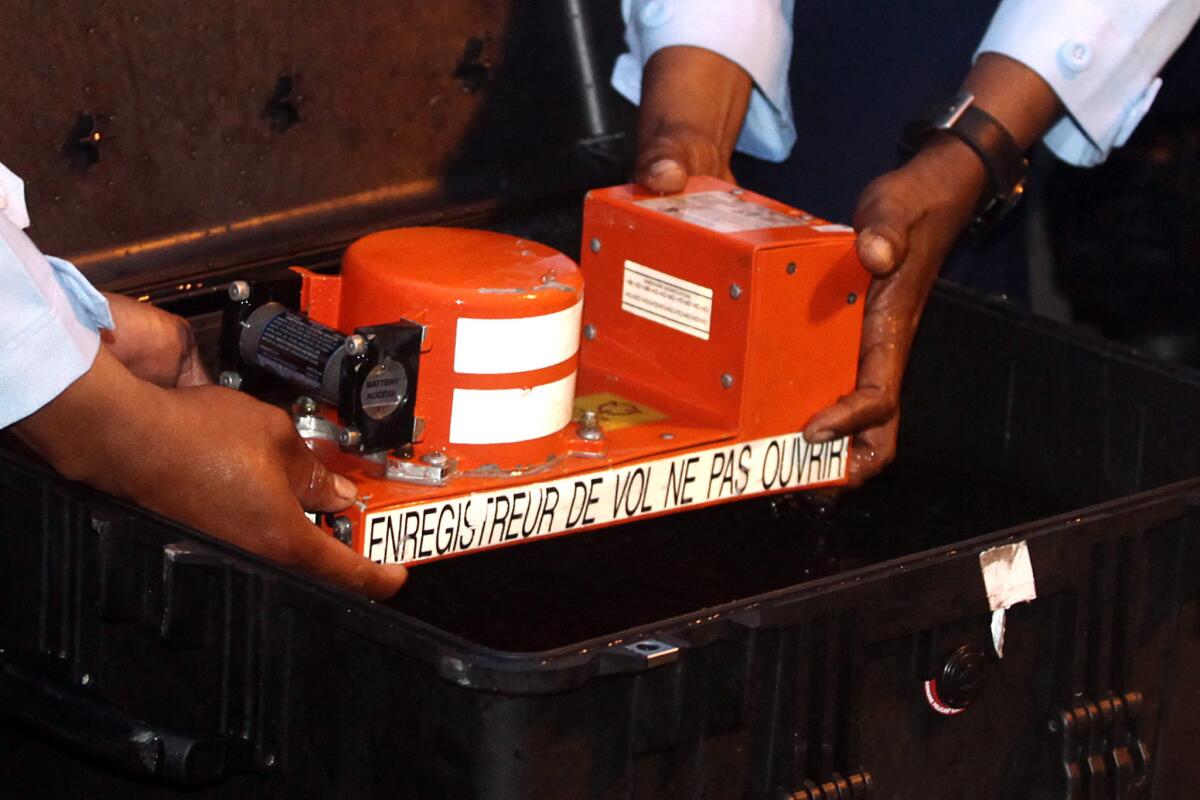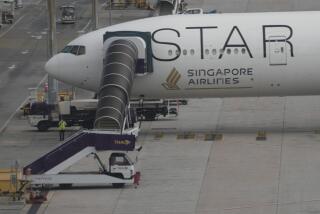AirAsia flight: Jet may have climbed at abnormal rate before crash

Reporting from Jakarta, Indonesia — The Indonesia AirAsia plane that crashed last month was climbing at an abnormally high rate of speed before plunging into the Java Sea, an analysis of radar data shows.
Indonesian Transport Minister Ignasius Jonan told the parliament Tuesday that data indicated Flight 8501 was climbing about 6,000 feet a minute before it disappeared on Dec. 28 with 162 passengers and crew members on board, according to officials present at the briefing.
Jonan did not say what caused the plane to climb so rapidly, but told lawmakers the rate of climb was “not normal” for commercial planes, said Nurcahyo Utomo, an investigator for Indonesia’s National Transportation Safety Committee.
“The normal rate is between 1,000 and 2,000 feet per minute,” Nurcahyo said.
Officials later cautioned that the stormy weather like the conditions the aircraft encountered can sometimes cause faulty readings, and that analysts were still examining the plane’s recorders for more accurate data.
“Maybe the aircraft did climb that fast, but maybe it didn’t. We cannot know for sure until we read the content of the flight data recorder,” said Wisnu Darjono, safety director at state-controlled Indonesian Flight Navigation Service.
The flight crew had requested permission to climb from 32,000 feet to 38,000 feet to avoid storm clouds moments before the crash, but were told by ground controllers to limit their climb to 34,000 feet because there were other aircraft in the area.
Earlier Tuesday, investigators said that an initial analysis of cockpit voice recordings has found no evidence that terrorism, hijacking or another crime caused the crash.
“There are no indications of terrorism,” Nurcahyo said. “There were no voices of other people apart from those of the pilots.”
The transport safety committee has been analyzing the aircraft’s recorders, which search crews pulled last week from the floor of the Java Sea. All aboard the flight are presumed dead.
Investigators did not detail what was said in the cockpit in the aircraft’s final moments but said that a full transcript of the recordings was not yet completed.
“The rule is that if we find indications of a crime, we will hand over the investigation to the police,” Nurcahyo said.
The committee’s lab in Jakarta is also examining the flight data recorder, which collects information on the aircraft’s electronic systems during a flight.
Investigators said a preliminary report on the crash would be released Jan. 28. Weather is believed to have played a role but analysts were also looking into whether a mechanical or other failure caused the 6-year-old Airbus A320 to go down after it encountered storm clouds midway through a two-hour flight from Surabaya, Indonesia, to Singapore.
Pathoni is a special correspondent. Times staff writer Shashank Bengali contributed to this report from Mumbai, India.
More to Read
Sign up for Essential California
The most important California stories and recommendations in your inbox every morning.
You may occasionally receive promotional content from the Los Angeles Times.










